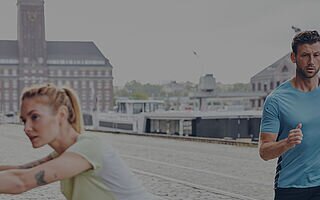Finding the ideal running shoe
How much comfort does your running shoe need? Much or little cushioning?
More or less support when rolling? These are important questions before buying a running shoe – and we have the answers. It is all about finding a running shoe that optimally supports your natural movement and gait, and at the same time your preferred area of use. That is why there is, for good reasons, a great choice and range of running shoes, which sometimes differ only in details. Most brands produce running shoes with a fit, soft cushioning and as much energy return as possible with every step. New types of plastics and processes such as injecting gas into the midsole make it possible to produce extremely light and comfortable running shoes. The most important features of a running shoe are:
Cushioning: Almost all running shoes currently rely on good cushioning. The softer the material, the less stable the shoe is. Soft cushioning usually feels very comfortable.
Guidance: Elements like "guide rails", which stabilize the foot when it rolls, or a harder material on the inside of the shoe provide support. Heavier runners and those who bend inwards a lot need more stable running shoes.
Reactivity: A material that does not "swallow" energy but returns it like a trampoline is used in more and more running shoes. The result is a very springy and bouncy running feeling.
Dynamics: The stiffening of the midsole with an integrated carbon or nylon sole should be used very selectively, for example for a new best time in competition - but not for normal endurance running, as the strain on the Achilles tendon increases. With good advice and consultation you can find the right sole for your foot, your running style, your running habits and your injury record.
Find the right shoe - even for individual training sessions. The best thing is to get personal advice on site from your running expert.

